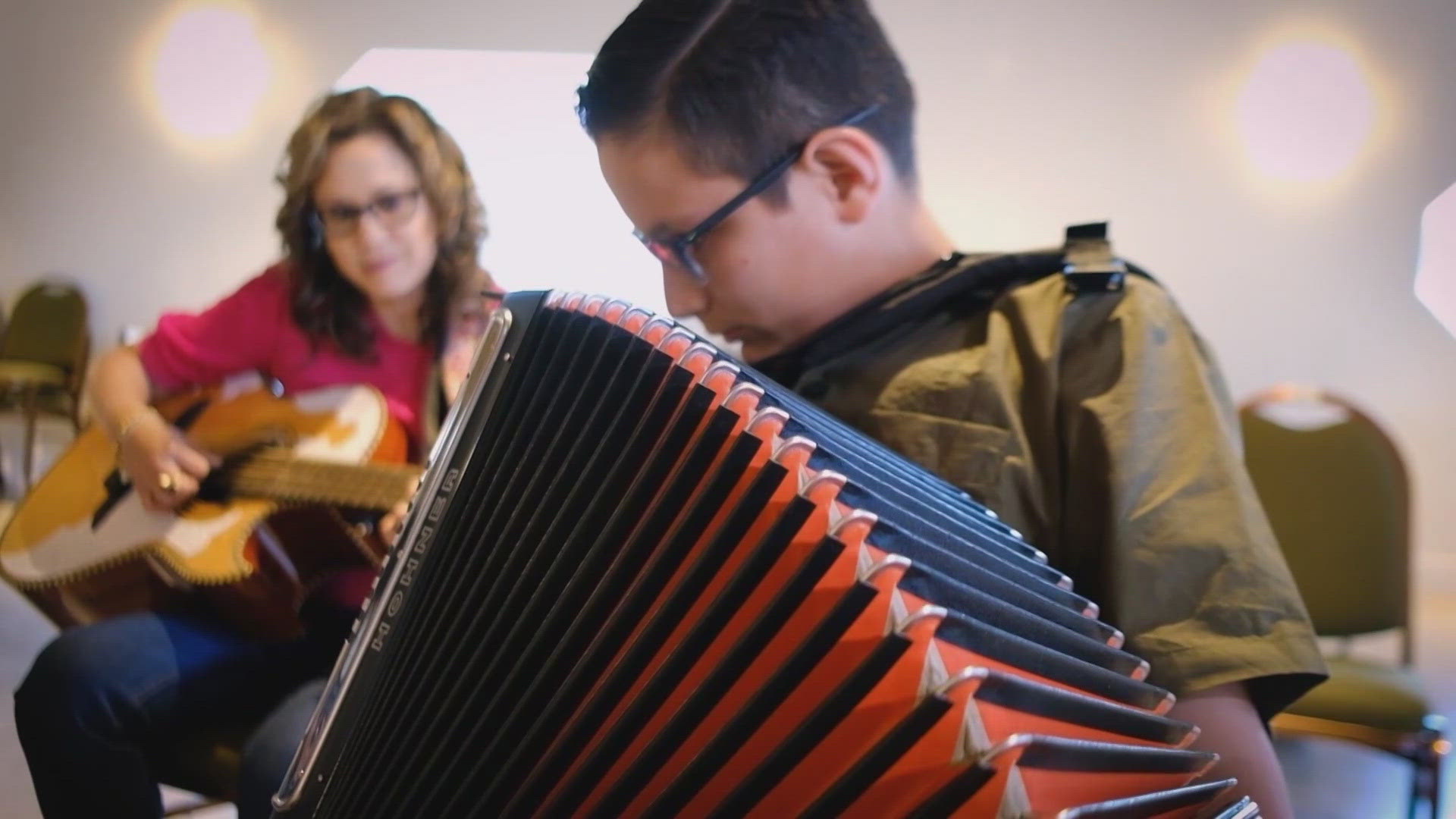SAN ANTONIO — On a Saturday afternoon inside the walls of the historic Lerma's Nite Club, the notes of Conjunto music ring out, enduring through generations young and old.
"It makes me feel really cool, but it also makes me feel proud because it's also part of my heritage," said Noelani Velasquez.
Noelani is just 11 years old, but Conjunto is in the accordionist's blood. The genre is a blend of Mexican of European sounds that some consider the stylistic father to Tejano music.
"I was always mesmerized that every time I played a song, my fingers knew where to go, even though my brain didn't remember all the notes perfectly," she said.
Noah Estrada just celebrated his 11th birthday and started picking up the accordion when most take their first steps.
He's been playing since he was 2.
"I like to hear the beats and tunes," he says. "Every time I hear it, it just gets me in a mood. I love it."
For Noah, contributing to the Conjunto music lineage is a family affair. His mother, Lisa, learned how to play the bajo sexto—motivated as much by the music as by sharing in her son's passion.
"I picked up on a little bit," she said. "(I'm) not the best, but it was important for me to at least be part of this to help my son see that we can make beautiful music together."
Together, Noah and Lisa are learning from the Conjunto Heritage Taller club, a 22-year-old nonprofit that offers free Conjunto and bajo sexto lessons for musicians of all ages.
The group's mission: the preservation and continuation of traditional Conjunto music, which is part of the cultural fabric of South Texas.
Celeste Cavazos, interim executive director for Conjunto Heritage Taller, called the genre the music of the community—specifically, of the working class.
"For me, it's like I was born with this music in me," Cavazos says.
A key element of Conjunto is the button accordion, which was introduced by German migrants in South Texas during the Industrial Revolution. As for the genre's name, Cavazos points to its literal translation, which means going together as a group.
In the early days of Conjunto, groups would follow migrant farmers from city to city as they played.
"It symbolizes the Chicano, Tejano and Mexican community," Cavazos said. "This is a truly American music. It's a molding of a bunch of cultures together."
Jose Villanueva is a product of the Conjunto Heritage Taller, having taken lessons started at 9 years old until he was 14.
His instructor, Lorenzo Martinez, was one of the organization's founders before passing away at the age of 80 in 2022. He leaves behind his legacy through former students like Villanueva, who now teaches Martinez's Saturday morning classes.
"It means the world to me," Villanueva said. "I do this because I love it, because it's my passion."
That passion is shared by Bene Medina, an instructor of more than 20 years. The three-time Hall of Famer from the Rio Grande Valley began play after his father bought him his own accordion.
"I remember the first number that I got to play on that thing," he said. "It was an old Mexican hit, 'Cartas a Eufemia.'"
That song was all it took.
"I built my own band and I really have had some of the best musicians here in town," Medina said. "And still, right now, we do."
To this day, the 85-year-old Medina has his band, Bene Medina y El Conjunto Aguila. And he says he's proud to teach at Taller, where his students keep him going.
His love and passion shine when he teaches his budding musicians. Those include Sylvia Ytuarte, who came for lessons to honor her father.
She says the Taller has become like family to her.
"You know, Mr. Medina, he'll get after you if you're not doing it right," she says.
The organization also offers a Pay It Forward program giving students the opportunity to purchase an instrument they check out for lessons. Payment plans run from 12 to 18 months, and students must be active in Taller lessons and performances. Once the instrument is paid off, the nonprofit will turn around and use those funds to purchase another instrument, keeping the education alive.
For more information, you can contact the organization at (210) 584-3557 or info@conjuntoheritagetaller.com.
Through the music and the lessons, the Conjunto Heritage Taller hopes to keep the tradition pulsing.
"I think that's really up to us to really keep the Conjunto music in the center, in the spotlight, so that we don't ever lose that," Cavazos said.

